- Origin: Ireland
- Manifestation: Leprechauns are described as small wizened men wearing a shoemaker’s leather apron.
The stereotype of the Leprechaun involves lucky charms and pots of gold at the end of the rainbow. If captured by a human, they often grant three wishes in exchange for their freedom.
Leprechauns are highly commercially modified spirits; their image used to sell breakfast cereal, beer, and anything even remotely Irish. In recent years, Leprechauns, re-envisioned as “evil Fairies” have evolved into villains of horror movies; however this distorted image has no relation whatsoever to true Leprechauns who may be grouchy but are by no means vicious killers.
True Leprechauns are members of the Fairy folk, a type of sidhe. They are unusual because, in a realm dominated by females, Leprechauns are virtually exclusively male spirits.
The name Leprechaun derives from the Gaelic leigh brog “one shoemaker.” He is a cobbler, the only professional sidhe. While the other sidhe are out dancing and reveling, the Leprechaun is hard at work. He is, however, always seen working on only one shoe rather than a pair, which may be a shamanic reference.
References to shoes, especially one shoe, are often oblique references to shamanism. Ancient shamanic seances were often performed with one shoe on and one shoe off or featured dance steps that mimicked limping.
He works on shoes continually, with time off only for an occasional spree. The Leprechaun is fabulously wealthy: he buries his treasure in pots and is reputedly a skillful but not always nice practical joker. He may be invoked for financial aid.
Like other Irish fairies, Leprechauns may be derived from the Tuatha Dé Danann. Leprechaun-like creatures rarely appear in Irish mythology and only became prominent in later folklore.
- Interesting factoid: Leprechaunism is another name for Donohoe Syndrome, a rare genetic disorder characterized by delayed or diminished growth and facial features perceived as elfin.
According to Yeats, the solitary fairies, like the Leprechaun, wear red jackets, whereas the “trooping fairies” wear green. The Leprechaun’s jacket has seven rows of buttons with seven buttons to each row. On the western coast, he writes, the red jacket is covered by a frieze one, and in Ulster the creature wears a cocked hat, and when he is up to anything unusually mischievous, he leaps on to a wall and spins, balancing himself on the point of the hat with his heels in the air.
According to McAnally:
He is about three feet high, and is dressed in a little red jacket or roundabout, with red breeches buckled at the knee, gray or black stockings, and a hat, cocked in the style of a century ago, over a little, old, withered face. Round his neck is an Elizabethan ruff, and frills of lace are at his wrists. On the wild west coast, where the Atlantic winds bring almost constant rains, he dispenses with ruff and frills and wears a frieze overcoat over his pretty red suit, so that, unless on the lookout for the cocked hat, ye might pass a Leprechawn on the road and never know it’s himself that’s in it at all.
This dress could vary by region, however. In McAnally’s account there were differences between Leprechauns or Logherymans from different regions:
- The Northern Leprechaun or Logheryman wore a “military red coat and white breeches, with a broad-brimmed, high, pointed hat, on which he would sometimes stand upside down”.
- The Lurigadawne of Tipperary wore an “antique slashed jacket of red, with peaks all round and a jockey cap, also sporting a sword, which he uses as a magic wand”.
- The Luricawne of Kerry was a “fat, pursy little fellow whose jolly round face rivals in redness the cut-a-way jacket he wears, that always has seven rows of seven buttons in each row”.
- The Cluricawne of Monaghan wore “a swallow-tailed evening coat of red with green vest, white breeches, black stockings,” shiny shoes, and a “long cone hat without a brim,” sometimes used as a weapon.
In a poem entitled The Lepracaun; or, Fairy Shoemaker, 18th century Irish poet William Allingham describes the appearance of the Leprechaun as:
…A wrinkled, wizen’d, and bearded Elf,
Spectacles stuck on his pointed nose,
Silver buckles to his hose,
Leather apron — shoe in his lap…
The modern image of the Leprechaun sitting on a toadstool, having a red beard and green hat, etc. is clearly more modern invention or borrowed from other strands of European folklore. Films, television cartoons and advertising have popularized a specific image of Leprechauns which bears little resemblance to anything found in the cycles of Irish folklore. It can be considered that the popularized image of a Leprechaun is little more than a series of stereotypes based on derogatory 19th-century caricatures.
Catching A Leprechaun
Leprechaun traps are crafts made, typically in elementary school or by families with small children, to celebrate Saint Patrick’s Day. Leprechaun trapping can be compared to leaving cookies out for Santa Claus on Christmas Eve. The traps are set up the night before St. Patrick’s Day, and children awaken to discover signs that leprechauns have visited the trap.
The traps are typically made out of common household items that can be easily found or purchased. The traps are typically green and gold and feature the stereotypical leprechaun items: gold coins, rainbows, top hat and four leaf clover. A simple google search will reveal literally hundreds of DIY Leprechaun trap ideas.
According to the tradition, one must believe leprechauns are real to trap one. It is also believed that leprechauns love gold and trickery, and may steal or hide items unless captured, pleased, or scared away. Once trapped, Leprechauns may grant three wishes, and in many of the folklore stories, those lucky enough to catch one are tricked, and made foolish wishes which they lived to regret.
In most cases, children return to the trap with signs of a leprechaun visiting rather than a leprechaun itself. There might possibly be chocolate coins, and small treasures left in their bottom drawers.
If you Catch A Leprechaun
If you get lucky and manage to catch a leprechaun you need to be smarter than him or else you will be easily tricked which can have damaging results, never take your eye off him or he will vanish.
A captured leprechaun will grant you three wishes or a gold coin to bribe his way to freedom but this is when things can go terrible wrong if the wrong decisions are made.
- Use your 3 wishes wisely
Many of an Irish man who thought he could out smart an Irish leprechaun had selected the three wishes and would either go insane trying to think of what to wish for or their wishes would back fire with something bad happening.
One common story was of Seamus in County Mayo who wished to be the richest man on a tropical island. However, when his wish came true he suddenly realized that there were no shops or pubs on the island to spend his money or even people to talk with. Unfortunately Seamus became bored after a few hours on the Island and had to waste his third wish to return to Ireland. This could be how the phrase “luck of the Irish” originated from.
One of the biggest tips an Irish person can give anyone is to never listen to what the Irish leprechauns says, no matter what. The leprechauns are great mind players and will say anything to confuse you. You’ll make the wrong wishes, although he is smart he can be fooled.
- Never trust an Irish Leprechaun
Irish leprechauns are devious little creatures and will do anything to escape from man so they should never be trusted. Some say angry leprechauns are more common than a friendly one but this is very untrue as Irish leprechauns are very friendly but tend to dislike humans who always seem to chase them for wishes and pots of gold.
If you ever spot a leprechaun you may be better off to pass him by without taking notice, you can end up in more trouble than its worth if decide to chase them as the people of Ireland only know to well. Unfortunately with cities in Ireland expanding the poor wee leprechauns are being driven further underground away from man, taking their rainbows with them.
Sources:
- Encyclopedia of Spirits
- Wikipedia
- You’re Irish
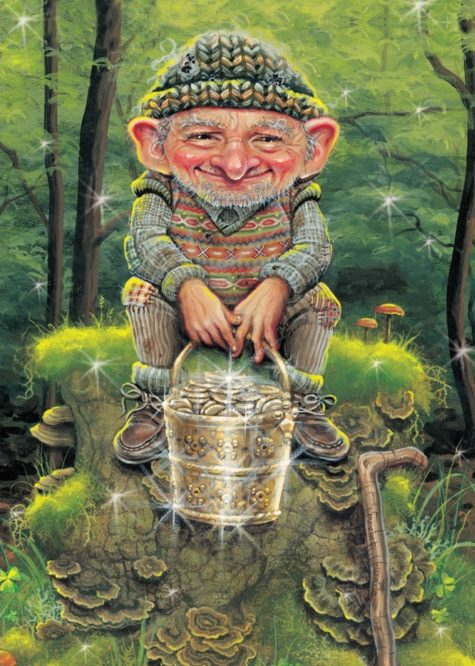
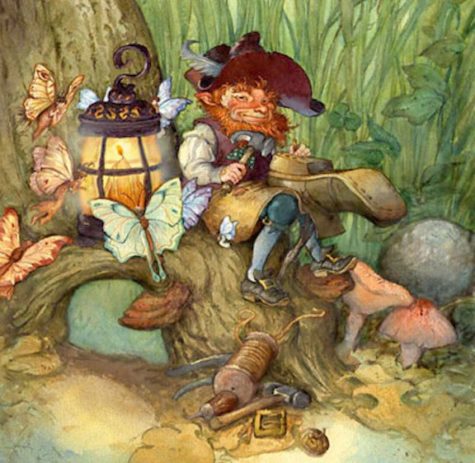
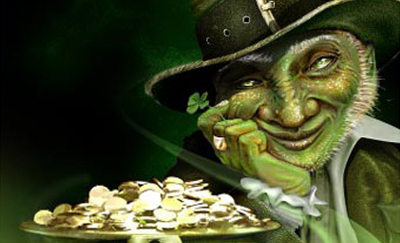
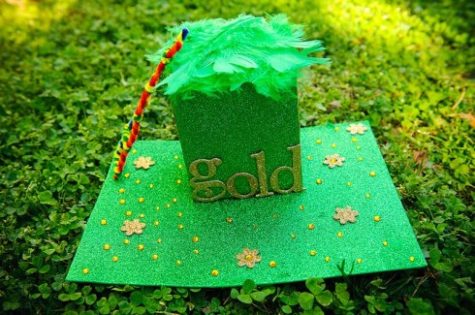
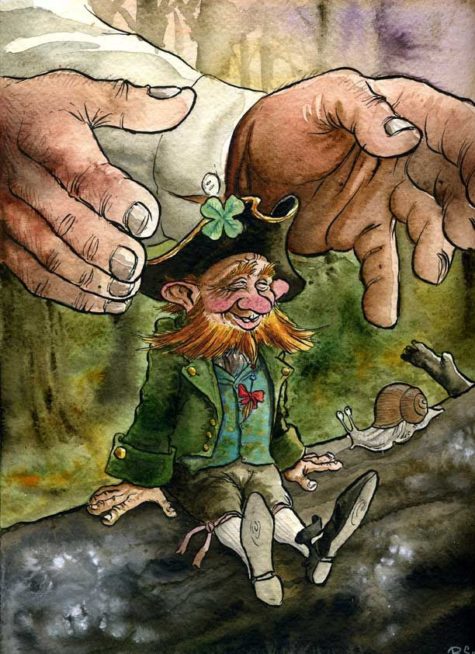



Leave a Reply